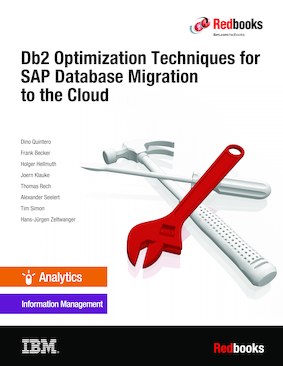
Published on 02 April 2024
Order hardcopy
Share this page:
ISBN-10: 0738419044
ISBN-13: 9780738419046
IBM Form #: SG24-8531-00
Authors: Dino Quintero, Frank Becker, Holger Hellmuth, Joern Klauke, Thomas Rech, Alexander Seelert, Tim Simon and Hans-Jürgen Zeltwanger
Abstract
For many years, SAP migrations have been a standard process. An increasing number of customers are changing their database software to IBM® Db2® for UNIX, Linux, and Windows or are moving their existing Db2 based infrastructure from on-premises into the cloud. When customers move to the cloud, a heterogeneous system copy is often needed because of a change in the underlying hardware architecture and operating system.
This book provides in-depth information about the best practices and recommendations for the source system database export, the advanced migration techniques, database layout and configuration, database import recommendations, SAP NetWeaver Business Warehouse, in addition to background information about Unicode. The book includes best practices in a single chapter that can be used as a quick reference for experienced migration consultants. It describes optimization strategies and best practices for migrating SAP systems to IBM Db2 for Linux, UNIX, and Windows. It is intended for experienced SAP migration experts and discusses IBM Db2 specific recommendations and best practices. It addresses advanced SAP migration techniques, considerations for database layout and tuning, and presents unique Db2 capabilities.
All techniques discussed within this book are based on extensive tests and experiences collected from countless migration projects. However, it is important to understand that some advanced optimizations described in this document might introduce risks to the overall process because of their complexity. Other optimizations might require changes to the production system. Therefore, use these features during migration only when the downtime window might not be large enough.
The authors want this book to be as helpful as possible. If you want to provide feedback on the recommendations or if you have suggestions or questions, you are welcome to contact the authors.
Table of Contents
Chapter 1. Introduction
Chapter 2. Db2 with SAP in the Cloud
Chapter 3. Migration essentials
Chapter 4. Tools overview
Chapter 5. Export optimization techniques
Chapter 6. Basic Db2 layout and configuration options
Chapter 7. Import/Export overlap
Chapter 8. Data transfer options
Chapter 9. Special cases
Chapter 10. Tips for monitoring
Chapter 11. Homogeneous system copy methods